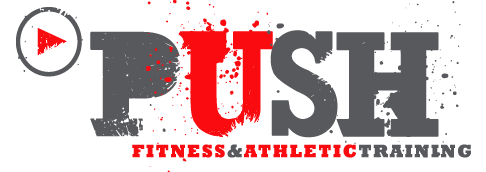Young Adult Degenerative Disc Disorder and Optimal Spine Health
- Disc displacement
- Vertebral compression fractures
- Nerve inflammation
Table of Contents
Cause For Concern
The disorder occurs when parts of the vertebrae known as endplates become too weak to withstand the spinal pressure inside the disc. The endplates are the top and bottom areas of the vertebrae that attach to the cartilage disc between each vertebra. When the endplates become weak, segments of the tough cartilage can protrude into the endplate, and into the vertebra. These protrusions are called Schmorl’s nodes and can contribute to the pain. Age-related wear and tear spinal conditions should not be present in kids and young adults. If there are persistent spinal issues and back pain there could be undiagnosed problem/s. Potential symptoms can include:- Continued pain throughout the spine/back
- Sitting, standing, or laying down causes an aching back
- Transitioning from walking to running or vice versa causes pain
- Bending, lifting non-heavy objects causes aching and pain
- Stretching the arms over the head causes aches and pain
- Posture problems to compensate for the back discomfort and pain
- Sleep problems
Disc Disorder Management
Because the disorder primarily affects the vertebral discs, chiropractic pain management is focused on reducing the pressure and strain on the discs. However, it does not mean that activity is to be restricted. Managing the condition focuses on improving strength and flexibility. Foundation strengthening/support is where a chiropractor could begin. This strengthens the hips, thighs, and hamstrings promoting stabilization of the posterior chain. This leads to body core stability and less spinal concussion during activity/s. Stretching exercises help maintain flexibility for dynamic movements like twisting and bending. Aerobic activity is also recommended to keep the condition in check. The heart-pumping circulates more blood throughout the body ensuring that the inflamed or injured areas get plenty of oxygenated blood, specifically the spine. Body mechanics also play a role as a proper heel striking when walking or running. Proper body mechanics lessens the impact of the aerobics on the spine and promotes overall wellness. Chiropractic spinal adjustments and realignment could also be part of a management treatment plan. High-velocity low amplitude adjustments help to reset the vertebrae and takes the stress off of discs.Prevention
Addressing any disc disorder early is the first step to prevent a lifetime of back pain problems. Seeking a chiropractic assessment as soon as possible will help identify any spinal misalignments or underlying conditions that mimick back pain symptoms/conditions. A chiropractor will develop a customized treatment/management plan to fit an individual’s needs.Lower Back Pain Injury Rehabilitation Chiropractic Care
Dr. Alex Jimenez’s Blog Post Disclaimer
The scope of our information is limited to chiropractic, musculoskeletal, physical medicines, wellness, and sensitive health issues and/or functional medicine articles, topics, and discussions. We use functional health & wellness protocols to treat and support care for injuries or disorders of the musculoskeletal system. Our posts, topics, subjects, and insights cover clinical matters, issues, and topics that relate and support directly or indirectly our clinical scope of practice.* Our office has made a reasonable attempt to provide supportive citations and has identified the relevant research study or studies supporting our posts. We also make copies of supporting research studies available to the board and or the public upon request. We understand that we cover matters that require an additional explanation as to how it may assist in a particular care plan or treatment protocol; therefore, to further discuss the subject matter above, please feel free to ask Dr. Alex Jimenez or contact us at 915-850-0900. The provider(s) Licensed in Texas& New Mexico*References
Heithoff, K B et al. “Juvenile discogenic disease.” Spine vol. 19,3 (1994): 335-40. doi:10.1097/00007632-199402000-00014Post Disclaimer *
Professional Scope of Practice *
The information herein on "Young Adult Degenerative Disc Disorder and Optimal Spine Health" is not intended to replace a one-on-one relationship with a qualified health care professional or licensed physician and is not medical advice. We encourage you to make healthcare decisions based on your research and partnership with a qualified healthcare professional.
Blog Information & Scope Discussions
Our information scope is limited to Chiropractic, musculoskeletal, physical medicines, wellness, contributing etiological viscerosomatic disturbances within clinical presentations, associated somatovisceral reflex clinical dynamics, subluxation complexes, sensitive health issues, and/or functional medicine articles, topics, and discussions.
We provide and present clinical collaboration with specialists from various disciplines. Each specialist is governed by their professional scope of practice and their jurisdiction of licensure. We use functional health & wellness protocols to treat and support care for the injuries or disorders of the musculoskeletal system.
Our videos, posts, topics, subjects, and insights cover clinical matters, issues, and topics that relate to and directly or indirectly support our clinical scope of practice.*
Our office has reasonably attempted to provide supportive citations and has identified the relevant research study or studies supporting our posts. We provide copies of supporting research studies available to regulatory boards and the public upon request.
We understand that we cover matters that require an additional explanation of how it may assist in a particular care plan or treatment protocol; therefore, to further discuss the subject matter above, please feel free to ask Dr. Alex Jimenez, DC, or contact us at 915-850-0900.
We are here to help you and your family.
Blessings
Dr. Alex Jimenez DC, MSACP, RN*, CCST, IFMCP*, CIFM*, ATN*
email: coach@elpasofunctionalmedicine.com
Licensed as a Doctor of Chiropractic (DC) in Texas & New Mexico*
Texas DC License # TX5807, New Mexico DC License # NM-DC2182
Licensed as a Registered Nurse (RN*) in Florida
Florida License RN License # RN9617241 (Control No. 3558029)
Compact Status: Multi-State License: Authorized to Practice in 40 States*
Presently Matriculated: ICHS: MSN* FNP (Family Nurse Practitioner Program)
Dr. Alex Jimenez DC, MSACP, RN* CIFM*, IFMCP*, ATN*, CCST
My Digital Business Card




